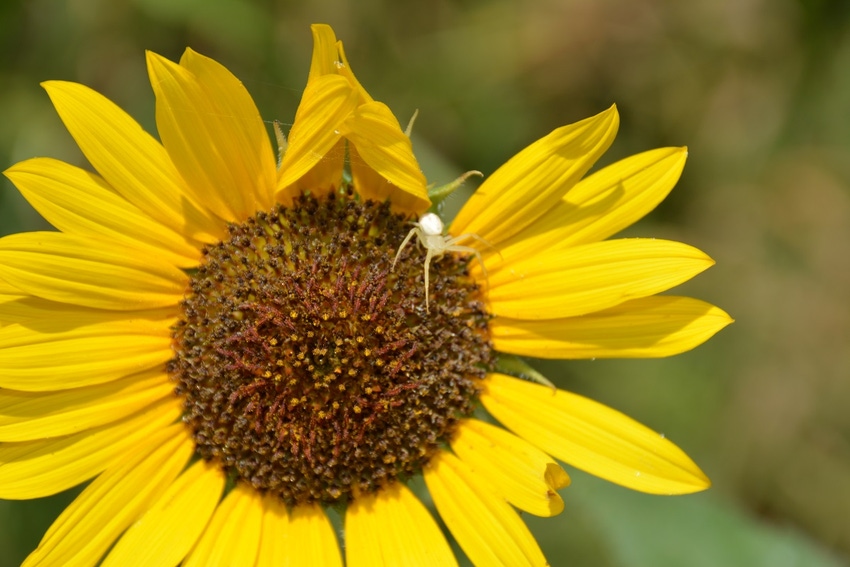
Wild sunflower could help reshape commercial production
Since genetic materials from wild sunflower species are found exclusively in North America, the hope for developing a higher yielding sunflower adapted to multiple conditions and tolerant to pest and disease pressure depends on wild varieties that have adapted through decades of natural change.

Commercial production of sunflowers in the U.S. may represent only a small fraction of worldwide sunflower production, but with sunflower oil a staple in many countries throughout the world, including Russia, China and South America, developing a sunflower seed variety tolerant to climate change as well as resistance to insect and disease pressure would represent a major breakthrough.
Since the sunflower is native only to North America, researchers have been searching for wild sunflower species in remote areas in an effort to collect germplasm that would help broaden the crop’s genetic base.
For the latest on southwest agriculture, please check out Southwest Farm Press Daily and receive the latest news right to your inbox.
The goal, according to Gerald Seiler, a research botanist at USDA-ARS Northern Crop Science Laboratory, where he is a member of the Sunflower and Plant Biology Research Unit, is to collect germplasm to be phenotyped for resistance to major insects and pathogens, cytoplasmic male sterility, and fertility restoration. The end goal is to develop improved commercial varieties with better yields and higher oil content.
Hybrid varieties could produce healthier resistant plants for the agriculture market would help U.S. farmers secure a larger share of global sunflower production.
On a recent trek across the American Southwest with Laura Marek, a plant physiologist and curator for USDA-ARS North Central Regional Plant Introduction Station in Ames, Iowa, Seiler stumbled upon a new wild sunflower species, H. anomalus that shows promise. The species offers promise in developing hybrids tolerant to climate extremes, including heat and cold and drought and flood, while exhibiting excellent tolerance to both insect and disease pressure, in addition to other benefits
Wild species adaptable
Marek explained that since genetic materials from wild sunflower species are found exclusively in North America, the hope for developing a higher yielding sunflower adapted to multiple conditions and tolerant to pest and disease pressure depends on wild varieties that have adapted through decades of natural change.
H. anomalus is not the first wild sunflower species Marek and Seiler have uncovered. Adding to a growing germplasm base for researchers are a number of other wild species, including four collected recently from a collection excursion across Arizona and Utah.
In all, Seiler and Marek have traveled from Florida to the Dakotas and across the Southwest seeking wild sunflower species, a quest that has resulted in furthering a significant collection of mature seeds that can be used to develop plants with greater oil content for commercial production. The H. anomalus species has provided the impetus to move their research forward.
H. anomalus flowers twice each year—spring and late summer—exhibits traits that make it drought and heat tolerant, and matures quickly. It is ideal for farmers hoping to beat the first frost of autumn. It also offers the greatest oil content of any other wild sunflower variety.
As H. anomalus seeds are added to the national collection center in Iowa, they will become available to breeders to begin building the sunflower crops of the future. Major seed companies have used seeds from the Iowa collection to develop better varieties in the past, and with this latest addition, researchers say it is just a matter of time before new commercial varieties will become available.
In spite of their recent discovery, Seiler says the hunt for more wild sunflower species will continue. With help from the U.S. Forrest Service, which has agreed to help identify wild sunflowers in remote areas, he says they are hopeful more species of wild sunflowers can be found before a changing climate reduces that possibility.
About the Author(s)
You May Also Like



